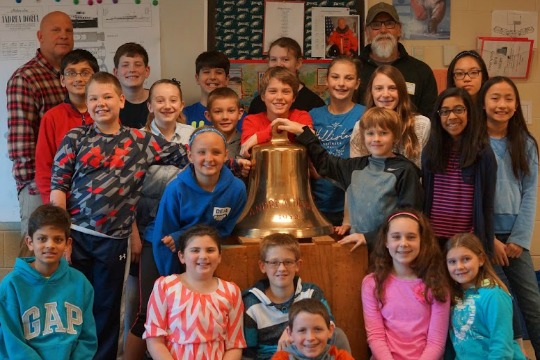On July 25, 1956, the Andrea Doria, a 697-foot Italian ocean liner with a near-capacity load of 1,706 passengers and crew, was nearing the end of a nine-day voyage from Genoa to New York when tragedy struck.

As the ship approached the coast of Nantucket, Mass., it collided with a Swedish vessel, killing 46 passengers and creating one of history’s most infamous maritime disasters – an event with special resonance for a Pocopson Elementary School student.
When Dave Lichter, a fifth-grade teacher, assigned his students to do a research project, Kendall Knox chose the Andrea Doria, a selection that would ultimately wow her classmates as well as her teacher.
On Wednesday, April 6, Lichter said he got his first inkling of the magnitude of Kendall’s presentation when he happened to see Principal Clif Beaver at the school’s elevator with two men and a large wooden crate.
“It was at that moment that I realized that this was something big and something special,” Lichter said.
Lichter explained that he knew from discussions with Kendall’s mother, a former student of Lichter’s, that the presentation would include a bell; however, he had no clue that the brass artifact weighed 200 pounds.
Accompanying the bell were Harold Moyers and John Moyer, who have been diving the Andrea Doria wreck for years. John Moyer, a Knox family friend, was part of the team, led by Bill Nagle in 1985, that brought the bell up from the depths of the Atlantic Ocean, Lichter said.
Lichter said that Moyers and Moyer participated in a lively Q&A after Kendell
"did an outstanding job presenting her project." He said the kids were interested in how deep the water was where the bell was found – about 250 feet – and how much it would be worth today. Lichter said the exact value is unknown but the fact that there is only one bell on every ship makes it precious.
The students also wanted to know how the divers managed to raise the bell off the ocean floor. The men explained that a type of balloon was attached to it and then inflated, carrying the bell to the surface, Lichter said.
“And, of course, everyone wanted to touch the bell,” Lichter said. “But then again, who can blame them?”


Comments